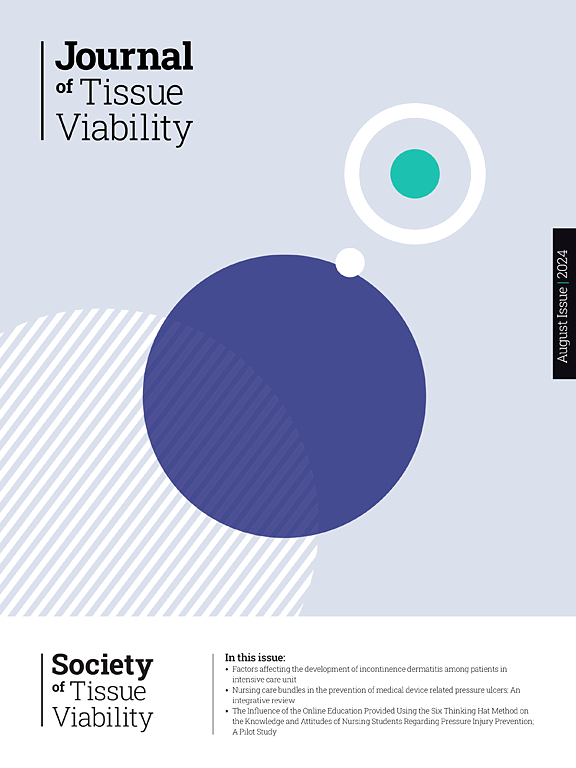Evaluating alternating pressure air mattress effectiveness through the measurement of skin redness and blood perfusion
IF 2.4
3区 医学
Q2 DERMATOLOGY
引用次数: 0
Abstract
This study presents a unique method to evaluate the effectiveness of Alternating Pressure Air Mattresses (APAMs) in preventing Pressure Injuries (PIs). We employed a Laser Speckle Blood Flow and Tissue Oxygenation Imager with color image gathering capabilities by Moor Instruments to quantify skin redness and blood perfusion (flux) in a research study involving 29 healthy participants across three surgical support surfaces: foam, gel, and APAM.
The methodology combined multimodal imaging with image segmentation and thresholding techniques to correlate visible skin redness with the underlying microcirculatory changes in perfusion (flux).
The results showed that APAMs exhibited the most significant initial increase in redness compared to baseline but also demonstrated the faster dissipation of concentrated redness and recovery of blood perfusion (flux) after offloading. A strong correlation (r = 0.63, P < 0.001) was observed between concentrated redness and blood flux for APAMs.
This approach goes beyond traditional incidence-based evaluations, providing insights into the dynamic tissue responses to different support surfaces. Our findings suggest that quantifying redness could be a practical and effective way to monitor individual patient responses to support surfaces, potentially leading to more personalized and effective PI prevention strategies.
通过测量皮肤红度和血流灌注来评价交变压力气垫的有效性
本研究提出了一种独特的方法来评估交替压力空气床垫(APAMs)在预防压力损伤(pi)方面的有效性。在一项涉及29名健康参与者的研究中,我们使用Moor Instruments的具有彩色图像采集功能的激光斑点血流和组织氧合成像仪来量化皮肤红度和血液灌注(通量),涉及三种手术支撑表面:泡沫、凝胶和APAM。该方法将多模态成像与图像分割和阈值分割技术相结合,将可见皮肤发红与灌注(通量)中潜在的微循环变化联系起来。结果表明,与基线相比,APAMs表现出最显著的初始红度增加,但卸载后集中红度的消散和血液灌注(通量)的恢复也更快。相关性强(r = 0.63, P <;APAMs浓度红度与血流量之间的差异为0.001)。这种方法超越了传统的基于发生率的评估,提供了对不同支撑表面的动态组织响应的见解。我们的研究结果表明,量化发红可能是监测个体患者对支撑表面反应的一种实用有效的方法,可能导致更个性化和有效的PI预防策略。
本文章由计算机程序翻译,如有差异,请以英文原文为准。
求助全文
约1分钟内获得全文
求助全文
来源期刊

Journal of tissue viability
DERMATOLOGY-NURSING
CiteScore
3.80
自引率
16.00%
发文量
110
审稿时长
>12 weeks
期刊介绍:
The Journal of Tissue Viability is the official publication of the Tissue Viability Society and is a quarterly journal concerned with all aspects of the occurrence and treatment of wounds, ulcers and pressure sores including patient care, pain, nutrition, wound healing, research, prevention, mobility, social problems and management.
The Journal particularly encourages papers covering skin and skin wounds but will consider articles that discuss injury in any tissue. Articles that stress the multi-professional nature of tissue viability are especially welcome. We seek to encourage new authors as well as well-established contributors to the field - one aim of the journal is to enable all participants in tissue viability to share information with colleagues.
 求助内容:
求助内容: 应助结果提醒方式:
应助结果提醒方式:


